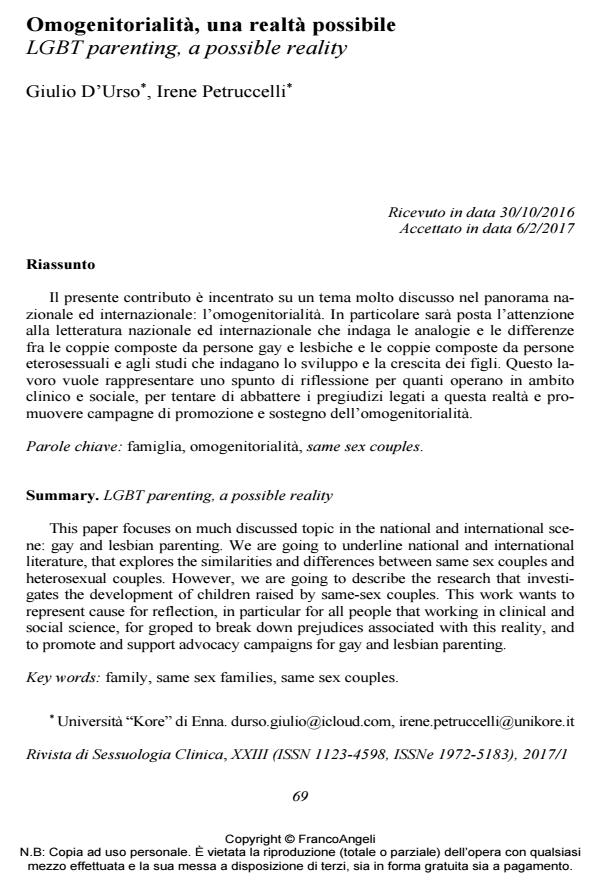LGBT parenting, a possible reality
Journal title RIVISTA DI SESSUOLOGIA CLINICA
Author/s Giulio D’Urso, Irene Petruccelli
Publishing Year 2017 Issue 2017/1
Language Italian Pages 17 P. 69-85 File size 234 KB
DOI 10.3280/RSC2017-001004
DOI is like a bar code for intellectual property: to have more infomation
click here
Below, you can see the article first page
If you want to buy this article in PDF format, you can do it, following the instructions to buy download credits

FrancoAngeli is member of Publishers International Linking Association, Inc (PILA), a not-for-profit association which run the CrossRef service enabling links to and from online scholarly content.
This paper focuses on much discussed topic in the national and international scene: gay and lesbian parenting. We are going to underline national and interna-tional literature, that explores the similarities and differences between same sex couples and heterosexual couples. However, we are going to describe the research that investigates the development of children raised by same-sex couples. This work wants to represent cause for reflection, in particular for all people that working in clinical and social science, for groped to break down prejudices associ-ated with this reality, and to promote and support advocacy campaigns for gay and lesbian parenting.
Keywords: Family, same sex families, same sex couples.
Giulio D’Urso, Irene Petruccelli, Omogenitorialità, una realtà possibile in "RIVISTA DI SESSUOLOGIA CLINICA" 1/2017, pp 69-85, DOI: 10.3280/RSC2017-001004